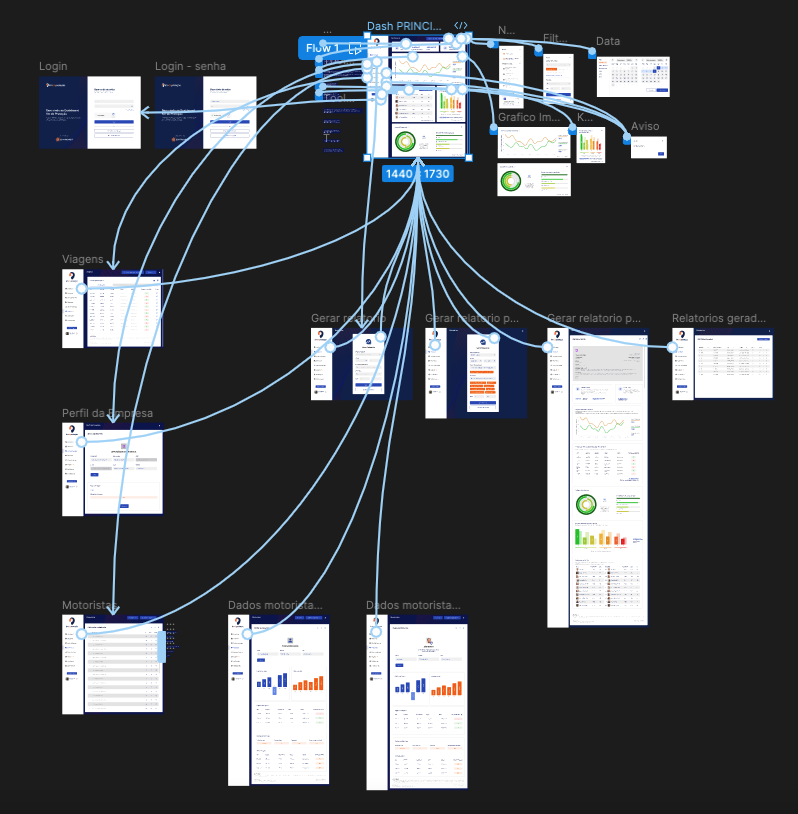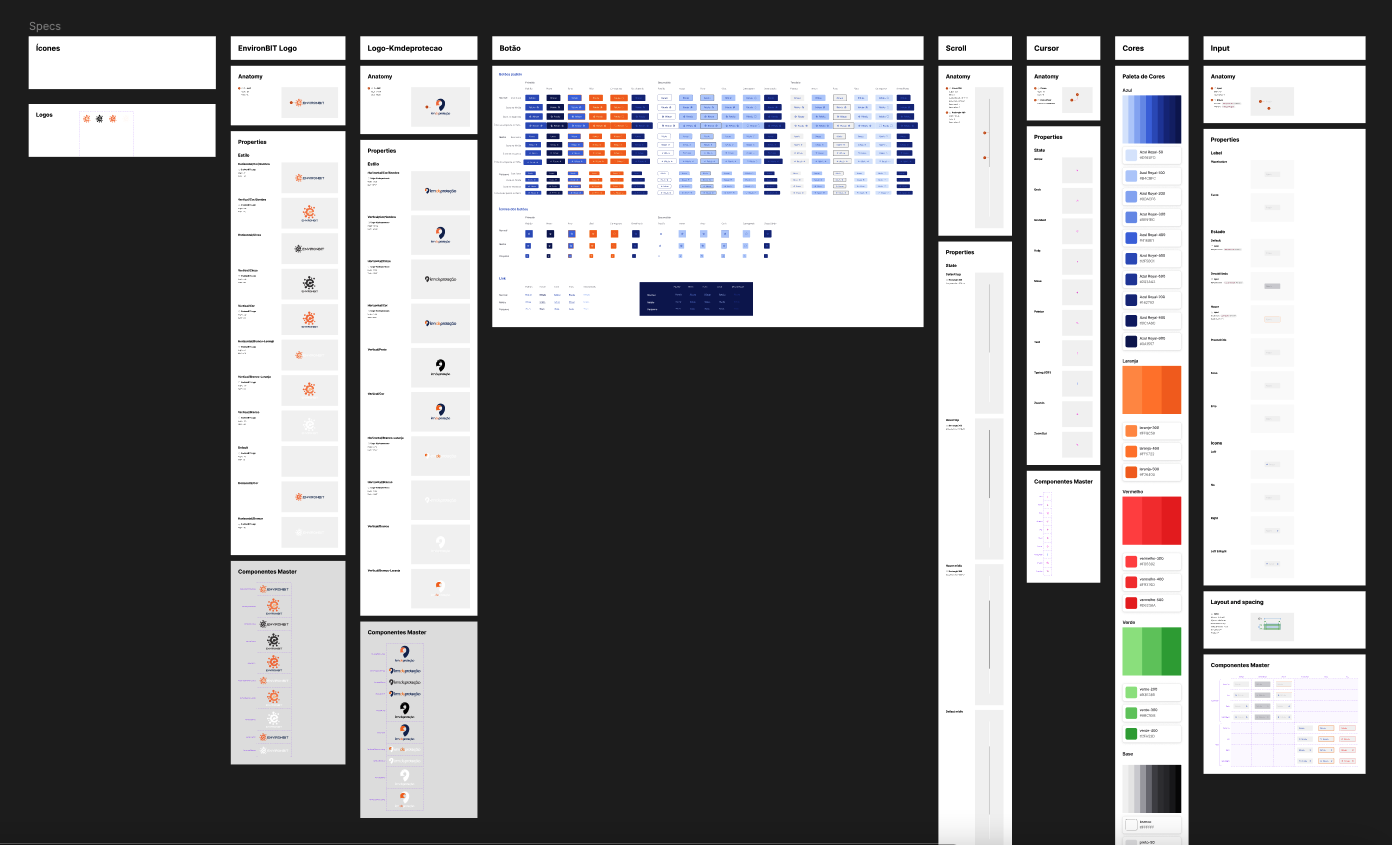Project
Development of the KM Protection Dashboard
In the Environbit project, I was primarily responsible for the development of the KM Protection Dashboard, a complex system designed to monitor risk areas on the company’s routes and to evaluate and communicate the positive impact on accident reduction and local wildlife preservation. The main challenge was to create an intuitive and functional dashboard capable of transforming large volumes of data into clear, actionable insights for different user profiles.

Goal
Validating the strategic approach and user-centred design
The design process began with an in-depth immersion in the project requirements, using flow diagrams to map out the critical data that needed to be represented. To ensure the final product aligned with stakeholder expectations, I conducted brainstorming sessions, story mapping, and developed detailed personas. The primary persona was an operations manager whose objective was to obtain precise information about risk areas on the company’s routes and to implement preventive measures to reduce accidents. Another key persona was a sustainability analyst, focused on tracking and communicating the company’s positive impact on local wildlife preservation and metrics related to social and governance aspects.
The complexity of the design was reflected in the need to develop two distinct dashboards: one focused on end-users, with an emphasis on data visualisation and operational data interpretation, and another for administrators, with more advanced data management and analysis features. The design included dynamic charts, detailed reports, and an interface tailored to facilitate navigation and decision-making.
Given the constrained timeline and budget, it was crucial to adopt a prioritisation matrix to define essential functionalities and ensure delivery within the schedule. Paper prototyping and scenario creation were key to quickly iterating and refining the design based on continuous user feedback. The development of user stories and acceptance criteria ensured that each element of the dashboard met users’ expectations and needs.
Additionally, I established metrics to monitor the performance of all platform tools, ensuring that the dashboard not only met initial expectations but also provided a solid foundation for future expansions and improvements.
This project showcased my ability to manage the complexity of a critical information system, from the initial conception to the delivery of a robust and effective product within the established limits. The delivery of the MVP to investors was a significant milestone, validating the strategic approach and user-centred design.

Low-Fidelity Prototype:
With the personas and user stories in place, I started by creating low-fidelity prototypes. These initial wireframes and simple prototypes served as rough sketches to test and refine concepts and ideas. This stage allowed for rapid exploration of different layouts and interaction flows, providing a foundation for more detailed design work and enabling quick iterations based on early feedback.

High-Fidelity Prototype:
Following the low-fidelity prototypes, I developed a high-fidelity prototype to accurately represent the final appearance and functionality of the MVP. Using advanced design tools, I created an interactive model that closely simulated the user experience of the finished product. This high-fidelity prototype was essential for validating the design with stakeholders and investors, offering a clear and detailed visualisation of the product’s features and flow. The interactive nature of this prototype enabled valuable feedback and allowed for final adjustments before the presentation.

Design System Development:
Throughout the project, I developed a comprehensive Design System. This included a library of reusable components, colour schemes, typography, and interaction patterns, ensuring consistency and efficiency across the MVP. The Design System provided a unified approach to creating interface elements and facilitated collaboration with other team members, maintaining design quality and integrity throughout the development process.

Additional Details:
The MVP was designed to serve as a key tool in securing funding and support from investors. As the sole designer on the project, I managed all aspects of the design process, from concept to final delivery. This project highlighted my ability to work independently and deliver high-quality results under tight deadlines.
Let's create something amazing together.
+55 41 984 202 983
marlopesrock@gmail.com
Explore my work and see how I've helped brands transform ideas into impactful digital solutions.
Copyright © 2025 Mariana L. Rocha